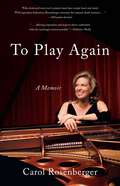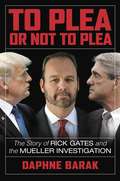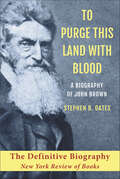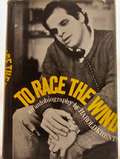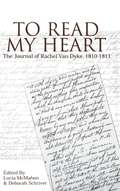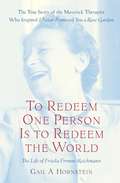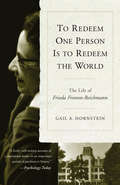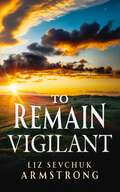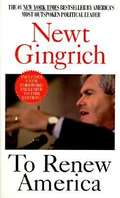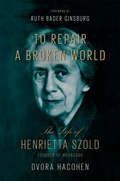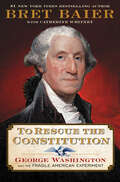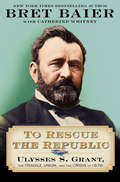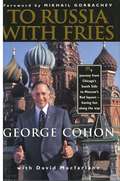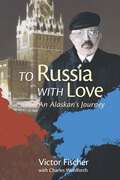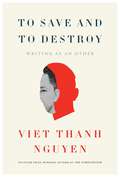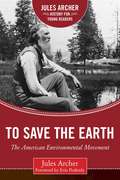- Table View
- List View
To Paris and Prison, Volume 2: The False Nun
by Jacques CasanovaThis book is the number 2 of "To Paris and Prison" by Jacques Casanova de Seingalt
To Play Again: A Memoir of Musical Survival
by Carol RosenbergerAt age twenty-one, while she was working with the legendary Nadia Boulanger in France, concert pianist Carol Rosenberger was stricken with paralytic polio—a condition that knocked out the very muscles she needed in order to play. But Rosenberger refused to give up. Over the next ten years, against all medical advice, she struggled to rebuild her technique and regain her life as a musician—and went on to not only play again, but to receive critical acclaim for her performances and recordings. Beautifully written and deeply inspiring, To Play Again is Rosenberger&’s chronicle of making possible the seemingly impossible: overcoming career-ending hardships to perform again.
To Play With Fire: One Woman's Remarkable Odyssey
by Tova MordechaiHow does Tonica Marlow, an evangelical female minister, find her way to becoming Tova Mordechai, an Orthodox, practicing Jew? Born the daughter of an Egyptian Jewish mother and a British Protestant evangelical father, Mordechai presents the powerful real-life account of her tumultuous journey to Judaism as she grapples with Christianity and her Jewish roots.
To Plea or Not to Plea: The Story of Rick Gates and the Mueller Investigation
by Daphne BarakDaphne Barak reveals why Rick Gates pled guilty in the Mueller probe and the lasting repercussions of this ordeal. Rick Gates joined the Trump campaign with Paul Manafort, with whom he had worked for some time. In fact, Gates' first career job was as an intern for Manafort's firm. So, when the Mueller investigation charged Paul Manafort, they also investigated Gates and eventually Gates took a plea deal. In TO PLEA OR NOT TO PLEA, Daphne Barak tells the story of Gates' very positive experience as deputy campaign manager for the Trump campaign and deputy Chairman of the Donald Trump inaugural Committee, followed by the ordeal that Gates has been put through by the Mueller investigation -- and why he felt he had to plead guilty to protect himself and his family.
To Prussia With Love: Misadventures in Rural East Germany
by Roger BoyesIn a desperate attempt to save his relationship with girlfriend Lena and take a break from the world of journalism, Roger Boyes agrees to leave Berlin for deepest, darkest Brandenburg and decides to set up a B&B in a run-down old schloss that Lena has inherited. Farce meets romance in this follow-up to the successful A Year in the Scheisse.
To Prussia With Love: Misadventures in Rural East Germany
by Roger BoyesIn a desperate attempt to save his relationship with girlfriend Lena and take a break from the world of journalism, Roger Boyes agrees to leave Berlin for deepest, darkest Brandenburg and decides to set up a B&B in a run-down old schloss that Lena has inherited. Farce meets romance in this follow-up to the successful A Year in the Scheisse.
To Punish and Protect: One DA's Fight Against a System That Coddles Criminals
by Catherine Whitney Jeanine PirroFormer prosecutor Jeanine Pirro's To Punish and Protect challenges us to have the will and the courage to wage war on the predators roaming our streets, and to avenge their victims. "The office of the district attorney is a battleground, where the fight between good and evil unfolds each day. We see the ugliest side of life, the pain that people go through for no reason. They didn't do anything. They didn't ask for it. Yet here they are, living their personal nightmares. We cannot take away their pain, or turn back time to undo the damage, but we can be the avengers. We can seek justice on their behalf."So begins this riveting account by the former Westchester County District Attorney, Jeanine Pirro, as she takes us inside the violent world of modern crime fighting. Before Pirro was elected DA in 1993, the job was always considered a man's domain, demanding a macho toughness. Pirro can be as tough as any man, and yet she adds an important new dimension to the role. She believes that being tough on crime means much more than just filling the jails. She goes beyond her role to punish criminals, to be a passionate advocate for the victims of crime.In To Punish and Protect, Pirro brings readers face to face with the gruesome realities of her daily battles, and tells the true, heartbreaking stories of the victims - the slaughter of a young woman and her two children by a jealous, enraged boyfriend; a teenage girl forced to assume wifely duties after her father murdered her stepmother; a nine-year-old boy chained to a radiator in a dark room and nearly starved to death, as the rest of the family went about its business; a gentle, hardworking man shot fatally in a dispute over a parking place, because he was black; an eighty-year-old woman, savagely beaten by her son and left for two days on the cold floor of her apartment; a beautiful woman whose wealth and privilege could not prevent her murder at the hands of a violent husband; and a group of young girls lured into a sexual nightmare by a cunning predator posing as a trustworthy youth counselor.Pirro presents hard truths about the ways in which parents, communities, and the justice system share complicity in fostering an environment of danger to our children. She describes the dark world of Internet pedophiles and hate mongers, who are allowed to hide behind First Amendment protections to gain access to kids in their own bedrooms. She offers a harsh judgment on parents who fail to address the deadly consequences of teen drinking, and even host keg parties in their homes, while alcohol continues to take young lives and destroy families.Pirro delivers a bold indictment of the criminal justice system, and asks whether we as a nation are truly committed to justice. Increasingly, she warns, our laws, attitudes, and behaviors seem to be veering away from what we say is our moral core as a nation. We say that we exalt good and punish evil, yet we do the opposite. We turn criminals into celebrities, and view victims with suspicion. If we're going to make our communities safer and our society less violent, we need to do more than just pay lip service to our ideals.
To Purge This Land with Blood: A Biography of John Brown
by Stephen B. OatesThe Definitive Biography of John Brown, Newly Updated "John Brown's life was filled with drama, and Oates tells his story in a manner so engrossing that the book reads like a novel, despite the fact that it is extensively documented and researched." -Eric Foner, The New York Times Book Review Professor Oates "has given us the most objective and absorbing biography of John Brown ever written. The subtitle perfectly captures Brown's own conception of his role in the antislavery crusade. Oates describes with subtlety and detail John Brown's early career, his struggles with poverty, illness and death, the desperate straits the man was put to in support of his large family of twenty children. He tells us that Brown came to the armed phase of his abolitionist career at the end of many business ventures and as many failures, unsuccessful speculations, lawsuits, and bankruptcies, even misappropriation of funds." -Willie Lee Rose, New York Review of Books In October 1859, abolitionist John Brown led a raid on the federal armory at Harpers Ferry. His goal was to secure weapons and start a slave rebellion. The raid was a failure, but it galvanized the nation and sparked the Civil War. Still one of the most controversial figures in American history, John Brown's actions raise interesting questions about unsanctioned violence that can be justified for a greater good. For more than a hundred years after Brown's hanging, biographies of him tended to be highly politicized-then came historian Stephen B. Oates' biography of Brown. Since its publication, Professor Oates' work has come to be recognized as the definitive biography of Brown, a balanced assessment that captures the man in all his complexity.
To Race the Wind
by Harold KrentsThe autobiography of Harold Krents, a young blind man who was a well-known lawyer in the early 1970's. Harold was the inspiration for the film and play, Butterflies Are Free.
To Read My Heart
by Lucia Mcmahon Deborah Schriver"The Journal of Rachel Van Dyke," a compelling primary document previously unpublished, offers insights into the life and mind of a seventeen-year-old young woman, while also providing a fascinating window into the cultural and social landscape of the early national period. Rachel was a thoughtful, intelligent, observer, and her journal is an important account of upper- and middle-class life in the growing city of New Brunswick, New Jersey. Her entries reveal her remarkably studied views on social customs, marriage, gender roles, friendship, and religion.The journal is dominated by two interrelated themes: Rachel's desire to broaden her knowledge and her friendship with her teacher, Ebenezer Grosvenor. Since Ebenezer was both her teacher and her romantic interest, it is impossible to distinguish between the themes of education and romance that dominate her writings. On several occasions, Rachel and Ebenezer exchanged their private journals with each other. During these exchanges, Ebenezer added comments in the margins of Rachel's journal, producing areas of written "conversation" between them. The marginalia adds to the complexity of the journal and provides evidence of and insight into Rachel's romantic and intellectual relationship with him. The written interactions between Rachel and Ebenezer, together with discussions of friendship and courtship rituals provided throughout the journal, enrich our understanding of social life during the early national period.To Read My Heart will be of interest to students of American history, women's studies, and nineteenth-century literature; all readers will be captivated by the rich expression and emotional experience of the journal. Whether she is relating the story of a young friend's wedding, the death of a small boy, or the capture of a slave in Guinea, Rachel's pages have universal appeal as she seeks to understand her own role as an emerging adult.
To Redeem One Person Is to Redeem the World: The Life of Frieda Fromm-Reichmann
by Gail A. HornsteinIn this marvelously researched and moving biography closely grounded in Frieda Fromm-Reichmann's work, Gail Hornstein brings back to life the maverick psychiatrist who accomplished what Freud and almost everyone else thought impossible: successfully treating schizophrenics and other seriously disturbed mental patients with intensive psychotherapy, not lobotomy, shock treatment, or drugs. To Redeem One Person Is to Redeem the World tells the extraordinary life story of the German-Jewish refugee analyst, who was the first wife of Erich Fromm. Written with unprecedented access to a rich archive of Frieda Fromm-Reichmann's clinical work at the legendary Chestnut Lodge Hospital in Rockville, Maryland, and using newly discovered family records and documents from across Europe and the United States, this is the definitive biography of a remarkable woman. Best known to millions as the courageous therapist inI Never Promised You a Rose Garden, Joanne Greenberg's bestselling chronicle of madness and recovery, Fromm-Reichmann (1889-1957) is a fascinating and controversial figure in twentieth-century psychiatry. To Redeem One Person Is to Redeem the World traces the story of her life and education, from a loving childhood as the eldest of three daughters in an Orthodox Jewish family to medical school at seventeen, as one of the first women admitted to study at a Prussian university. During World War I, Fromm-Reichmann took charge of a military hospital in Königsberg, transforming it into a pioneering center for the treatment of brain injury. By her mid-thirties, she had opened her own psychiatric sanitarium in Heidelberg, where she and her staff put into practice a unique and hopeful integration of psychotherapy and tikkun,the Jewish ethical principle that every person is worth saving. At thirty-six, she had an affair with and then married her patient, Erich Fromm, later the celebrated author of Escape from Freedom, The Art of Loving, and other psychological classics. Her close friends and colleagues in pre-World War II Germany included some of the most visionary intellectuals and therapists of the era: Martin Buber, Karen Horney, Franz Rosenzweig, Gershom Scholem, and Georg Groddeck, among others. Hornstein recounts Fromm-Reichmann's dramatic escape from Nazi Germany, exile in France and Palestine, and her flight to the United States, where she found asylum at a tiny hospital outside Washington, D.C. Over the following decades, Fromm-Reichmann would emerge as the most distinguished figure at Chestnut Lodge, a mental hospital unlike any other -- intellectually radical, yet filled with warm family feeling and deeply respectful of individual difference. Fromm-Reichmann was not only pivotal in creating a beacon of hope at Chestnut Lodge, which stood alone as the place where the sickest patients could go to be cured. She was also a maverick in her field -- the only prominent woman analyst of her day to write about schizophrenia, not femininity or children. And she had little interest in the arcane theoretical disputes that obsessed most of her colleagues; curing patients was her consuming goal. As the pendulum swings back from psychiatry's addiction to drugs as the sole treatment for mental illness, Fromm-Reichmann's breadth of vision makes this biography of a heroic, yet all-too-human, woman a timely and compelling work.
To Redeem One Person is to Redeem the World: The Life of Freida Fromm-Reichmann
by Gail A. HornsteinA fascinating and dramatic account of a controversial figure in twentieth-century psychiatry.In this “dazzling and provocative”* biography, Gail Hornstein brings back to life the maverick psychiatrist Frieda Fromm-Reichmann. To Redeem One Person Is to Redeem the World tells the extraordinary life story of the German-Jewish refugee analyst who accomplished what Freud and almost everyone else thought impossible: she successfully treated schizophrenics and other seriously disturbed mental patients with intensive psychotherapy, rather than medication, lobotomy, or shock treatment. Written with unprecedented access to a rich archive of clinical materials and newly discovered records and documents from across Europe and the United States, Hornstein’s meticulous and “delightfully lucid”** biography definitively reclaims the life of Fromm-Reichmann. The therapist at the core of Joanne Greenberg’s I Never Promised You a Rose Garden is also the analyst who had an affair with, and later married, her patient Erich Fromm. A pioneer in her field, she made history as the pivotal figure of the unique and legendary mental hospital, Chestnut Lodge.“A lively, well-written account of a charismatic leader in an important period of psychiatry’s history.”—Psychology Today“At a time when little pills are seen as a quick fix for almost everything, this book is well worth taking time to read and contemplate.”—Philadelphia Inquirer *Publishers Weekly **Kirkus Reviews
To Remain Vigilant: The Epic of Hotspur Book 1 (The Epic of Hotspur)
by Liz Schevtchuk ArmstrongEngland, circa 1400: Lauded by bards and envied by champions, Sir Harry Percy strides the earth with brash, graceful energy-and at the sound of his bootsteps, kings tremble. Nicknamed Hotspur for his audacity and unceasing vigilance (as if his spurs never cool), he advocates justice and opposes royal corruption as boldly as he wages war. His courage and integrity win the hearts of a nation and love of a spirited woman. But his actions give rise to troubling questions: Is a king above the law, or subject to it, like everyone? Does a knight owe fealty to a ruler, or to the realm itself? And should he be faithful to the Crown if it means he must be unfaithful to his conscience? The answers could shape destiny. Unnerved, successive kings denounce Harry's idealism as treason and determine to stop him. Thus the lines are drawn...
To Remember Forever: The Journal of a College Girl, 1922-1923
by Gladys Hasty CarrollThis is a Journal kept by Gladys Hasty Carroll during her freshman and sophomore years at Bates College, 1921 - 1923. It also includes a lot about her home in South Berwick, Maine and all of the characters who populated her childhood. Not only is Carroll a great writer, but she is flooded with emotion even more than most young people and is able to articulate it beautifully. So much of her experience at Bates is familiar to anyone who has attended college at Bates, in that era.
To Renew America
by Newt GingrichWith characteristic bluntness, the Speaker of the House describes where he believes the country should go and how such monumental goals can be achieved, relating not only to the formative events of his own political career but also to key elements of his vision of America's future.
To Repair a Broken World: The Life of Henrietta Szold, Founder of Hadassah
by Dvora HacohenThe authoritative biography of Henrietta Szold, founder of Hadassah, introduces a new generation to a remarkable leader who fought for women’s rights and the poor. Born in Baltimore in 1860, Henrietta Szold was driven from a young age by the mission captured in the concept of tikkun olam, “repair of the world.” Herself the child of immigrants, she established a night school, open to all faiths, to teach English to Russian Jews in her hometown. She became the first woman to study at the Jewish Theological Seminary, and was the first editor for the Jewish Publication Society. In 1912 she founded Hadassah, the international women’s organization dedicated to humanitarian work and community building. A passionate Zionist, Szold was troubled by the Jewish–Arab conflict in Palestine, to which she sought a peaceful and equitable solution for all. Noted Israeli historian Dvora Hacohen captures the dramatic life of this remarkable woman. Long before anyone had heard of intersectionality, Szold maintained that her many political commitments were inseparable. She fought relentlessly for women’s place in Judaism and for health and educational networks in Mandate Palestine. As a global citizen, she championed American pacifism. Hacohen also offers a penetrating look into Szold’s personal world, revealing for the first time the psychogenic blindness that afflicted her as the result of a harrowing breakup with a famous Talmudic scholar. Based on letters and personal diaries, many previously unpublished, as well as thousands of archival documents scattered across three continents, To Repair a Broken World provides a wide-ranging portrait of a woman who devoted herself to helping the disadvantaged and building a future free of need.
To Rescue the Constitution: George Washington and the Fragile American Experiment
by Catherine Whitney Bret Baier#1 New York Times bestselling author Bret Baier reveals how George Washington saved the Constitution–and the American experiment. <p><p> A sweeping narrative ranging from the unsettled early American frontier and the battlefields of the Revolution to the history-making clashes within Philadelphia’s Independence Hall, Bret Baier’s To Rescue the Constitution dramatically illuminates the life of George Washington, the Founder who did more than perhaps any other individual to secure the future of the United States. <p><p> George Washington rescued the nation three times: first by leading the Continental Army to victory in the Revolutionary War, second by presiding over the Constitutional Convention that set the blueprint for the United States and ushering the Constitution through a fractious ratification process, and third by leading the nation as its first president. There is no doubt that the struggling new nation needed to be rescued—and that Washington was the only American who could bring the together. <p><p> After the victorious War of Independence, when a spirit of unity and patriotism might have been expected, instead the nation fractured. The states were no more than a loosely knit and contentious confederation, with no strong central union. It was an urgent matter that led to the calling of a Constitutional Convention to meet in Philadelphia during the summer of 1787. <p><p> Setting aside his plan to retire to Mount Vernon, Washington agreed to be a delegate at Philadelphia. There he was unanimously elected president of the convention. After successfully bringing the Constitution into being, Washington then sacrificed any hope of returning to private life by accepting the unanimous election to be the nation’s first president. Washington was not known for brilliant oratory or prose, but his quiet, steady leadership gave life to the Constitution by showing how it should be enacted. <p><p> In this vivid and moving portrait of America’s early struggles, Baier captures the critical moments when Washington’s leadership brought the nation from the brink of collapse. Baier exposes an early America that is grittier and far more divided than is often portrayed—one we can see reflected in today’s conflicts. <p> <b>New York Times Bestseller</b>
To Rescue the Republic: Ulysses S. Grant, the Fragile Union, and the Crisis of 1876
by Catherine Whitney Bret BaierThe #1 bestselling author and Fox News Channel’s Chief Political Anchor illuminates the heroic life of Ulysses S. Grant. <p><p> An epic history spanning the battlegrounds of the Civil War and the violent turmoil of Reconstruction to the forgotten electoral crisis that nearly fractured a reunited nation, Bret Baier’s To Rescue the Republic dramatically reveals Ulysses S. Grant’s essential yet underappreciated role in preserving the United States during an unprecedented period of division. <p><p> Born a tanner’s son in rugged Ohio in 1822 and battle-tested by the Mexican American War, Grant met his destiny on the bloody fields of the Civil War. His daring and resolve as a general gained the attention of President Lincoln, then desperate for bold leadership. Lincoln appointed Grant as Lieutenant General of the Union Army in March 1864. Within a year, Grant’s forces had seized Richmond and forced Robert E. Lee to surrender. <p><p> Four years later, the reunified nation faced another leadership void after Lincoln’s assassination and an unworthy successor completed his term. Again, Grant answered the call. At stake once more was the future of the Union, for though the Southern states had been defeated, it remained to be seen if the former Confederacy could be reintegrated into the country—and if the Union could ensure the rights and welfare of African Americans in the South. Grant met the challenge by boldly advancing an agenda of Reconstruction and aggressively countering the Ku Klux Klan. In his final weeks in the White House, however, Grant faced a crisis that threatened to undo his life’s work. The contested presidential election of 1876 produced no clear victory for either Republican Rutherford B. Hayes or Democrat Samuel Tilden, who carried most of the former Confederacy. Soon Southern states vowed to revolt if Tilden was not declared the victor. Grant was determined to use his influence to preserve the Union, establishing an electoral commission to peaceably settle the issue. Grant brokered a grand bargain: the installation of Republican Hayes to the presidency, with concessions to the Democrats that effectively ended Reconstruction. This painful compromise saved the nation, but tragically condemned the South to another century of civil-rights oppression. <p><p> Deep with contemporary resonance and brimming with fresh detail that takes readers from the battlefields of the Civil War to the corridors of power where men decided the fate of the nation in back rooms, To Rescue the Republic reveals Grant, for all his complexity, to be among the first rank of American heroes.
To Russia with Fries
by George CohonYou might think that an autobiography by the senior chairman of McDonald’s in Canada and Russia would be a modestly boastful, ho-hum business story of expansion and board-room debates, wrapped in some nice reminiscences about his family. You would be very wrong. Because this is George Cohon’s autobiography, and George Cohon (“Call me George, please!”) is not an ordinary man…not in his approach to business and not in his approach to telling his life story. It’s true that George Cohon is one of the most successful businessmen of his generation and that he’s also one of the most colourful. But the man you’ll meet in the pages of To Russia With Fries is considerably more complex than that description suggests. Here, you’ll encounter a man who not only dreamed the impossible dream of opening a McDonald’s restaurant in the heart of the Soviet Union (of all places), but had the patience, the persistence, and above all the good humour to navigate the maze of obstacles set in his course by a scornful communist bureaucracy. You’ll meet a man whose heart is bigger than his assets (he’s donating all the royalties from this book to charity); a man with a serious sense of fun, who loves (and is frequently on the receiving end of) practical jokes; a man whose life so far has been extraordinary by any standard. You’ll discover a man who is a natural and creative entrepreneur and an acknowledged expert on starting a business in Russia. He’s been there and done that – long before the crash of the Iron Curtain. From a man who can think and do six things at once (he’s been told he has a mind like a butterfly), comes a very lively and hugely entertaining story that has universal appeal.
To Russia with Love: An Alaskan's Journey
by Victor Fischer Charles WohlforthSon of the famous American journalist Louis Fischer, who corresponded from Germany and then Moscow, and the Russian writer Markoosha Fischer, Victor Fischer grew up in the shadow of Hitler and Stalin, watching his friends’ parents disappear after political arrests. Eleanor Roosevelt personally engineered the Fischer family’s escape from Russia, and soon after Victor was serving in the United States Army in World War II and fighting opposite his childhood friends in the Russian and German armies. As a young adult, he went on to help shape Alaska’s map by planning towns throughout the state. This unique autobiography recounts Fischer’s earliest days in Germany, Russia, and Alaska, where he soon entered civic affairs and was elected as a delegate to the Alaska Constitutional Convention—the body responsible for establishing statehood in the territory. A move to Washington, DC, and further government appointments allowed him to witness key historic events of his era, which he also recounts here. Finally, Fischer brings his memoir up to the present, describing how he has returned to Russia many times to bring the lessons of Alaska freedom and prosperity to the newly democratic states.
To Save and to Destroy: Writing as an Other (The Charles Eliot Norton Lectures)
by Viet Thanh NguyenFrom the Pulitzer Prize–winning author of The Sympathizer (now an HBO series) comes a moving and unflinchingly personal meditation on the literary forms of otherness and a bold call for expansive political solidarity.Born in war-ravaged Vietnam, Viet Nguyen arrived in the United States as a child refugee in 1975. The Nguyen family would soon move to San Jose, California, where the author grew up, attending UC Berkeley in the aftermath of the shocking murder of Vincent Chin, which shaped the political sensibilities of a new generation of Asian Americans.The essays here, delivered originally as the prestigious Norton Lectures, proffer a new answer to a classic literary question: What does the outsider mean to literary writing? Over the course of six captivating and moving chapters, Nguyen explores the idea of being an outsider through lenses that are, by turns, literary, historical, political, and familial.Each piece moves between writers who influenced Nguyen’s craft and weaves in the haunting story of his late mother’s mental illness. Nguyen unfolds the novels and nonfiction of Herman Melville, F. Scott Fitzgerald, Ralph Ellison, William Carlos Williams, and Maxine Hong Kingston, until aesthetic theories give way to pressing concerns raised by war and politics. What is a writer’s responsibility in a time of violence? Should we celebrate fiction that gives voice to the voiceless—or do we confront the forces that render millions voiceless in the first place? What are the burdens and pleasures of the “minor” writer in any society? Unsatisfied with the modest inclusion accorded to “model minorities” such as Asian Americans, Nguyen sets the agenda for a more radical and disquieting solidarity with those whose lives have been devastated by imperialism and forever wars.
To Save the Earth: The American Environmental Movement (Jules Archer History for Young Readers)
by Jules Archer Erin PeabodyWith today's climate change, our environmental problems aren’t going away any time soon.To Save the Earth looks at the lives of four extraordinary Americans who fought to save our earth. John Muir, a pioneer of conservationism, was the founder of our national park system. Rachel Carson, biologist and author, educated our country about the effects of pesticides and chemical waste. David McTaggart, the organizer of Greenpeace, introduced nonviolent protest into the struggle, while Dave Foreman, cofounder and former leader of the activist group Earth First!, shook up a movement that had grown complacent.The biographies of each of these figures, as well as personal interviews with David McTaggart and Dave Foreman, help us to understand the environmental movement specific to the United States. With current issues of excessive pollution and climate change, this is an excellent resource for introducing young readers to the cause. Upon first publication, To Save the Earth was chosen as a Junior Library Guild Selection, and now, this fascinating and important book is back in print to teach a whole new generation of readers the importance of environmental conservation and preservation.
To School Through The Fields
by Alice TaylorThrough the fields and in the cottages round about is where we view Alice Taylor's childhood in County Cork, Ireland. This gentle, witty memoir is told to the rhythms of nature and farm life as it cycles through the years. Reading it is like taking a vacation and better than any field trip you took to a farm. When the family slaughters a couple of hogs, all of the neighbours help and they all share in the meat. You'll see how it is processed from carcass to plate. You'll discover why Alice loves her quirky neighbours but isn't as fond of nuns. Sweating and happy, farmhands and children alike harvest the hay with the aid of a tumbling paddy, a huge comb like contraption made of wood. They wash off the sweat, hayseeds and insects in an icy refreshing stream. Then there's cold tea and apple cake to fortify them for another round of work. Alice's mother notices the best in everyone and oversees the daily recitation of the rosary. Her father is comforted more by the richness of life in his crops and farm animals. The children play freely outside not missing or needing toys. There are tragedies like the death of Alice's little brother, but most of Alice's memories of a time that is now lost to us, brim with joy humor and love.

